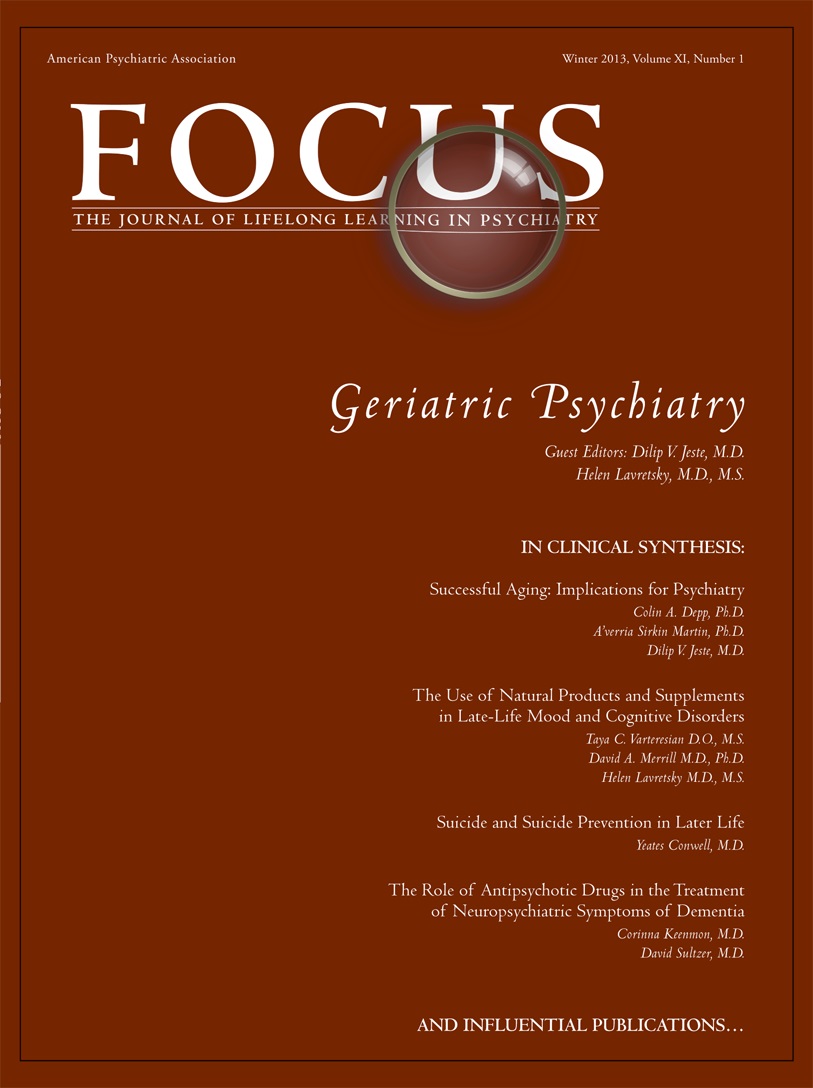Depression in Late-Life: A Focus on Prevention
Abstract
Introduction
Part A. the framework of prevention
Overview
| Prevention Modality | Target |
|---|---|
| Indicated | Person with subsyndromal depressive symptoms |
| Selective | Persons with high-risk factors: e.g. physical/functional impairment, living alone, medical comorbidity |
| Universal | General population, regardless of risk status |
Selective prevention
Indicated prevention in primary care settings
Summary
Part B. prevention opportunities in biological psychiatry
Overview: interferon-α-induced major depression as a model setting for prevention research
(i) The problem of heterogeneity
(ii) The problem of low statistical power
(iii) The importance of mechanistic relevance in identifying modifiable targets
(iv) The importance of efficiency
Five lessons from IFN-MDD research
Summary
| Lesson | Implication |
|---|---|
| 1. Antidepressant therapies can sometimes be used for prevention. There is some evidence that they are best used in those with pre-existing subsyndromal depression. | 1. Target antidepressant therapies for use as preventions in those with pre-existing subsyndromal depression symptoms. |
| 2. Specific therapies may address some symptoms but not other symptoms. | 2. Design prevention trials to examine prevention of specific symptom domains. |
| 3. Specific genetic risk factors may increase risk for some symptoms but not others. | 3. Target prevention therapies to examine prevention of specific symptom domains. |
| 4. Some biologic and genetic risk factors (e.g. the short allele in 5-HTTLPR) may be mediated by other modifiable factors (e.g. poor sleep). | 4. Design preventive interventions to target modifiable factors that act as mediators (e.g. treat poor sleep). |
| 5. Some biologic and genetic risk factors (e.g., high interleukin-6) may mediate influence of other modifiable risk factors (e.g. low omega-3 levels). | 5. Design preventive interventions to target modifiable risk factors (e.g. treat low omega-3 levels). |
Part C. prevention opportunities in global psychiatry
Prevention of depression in low- and middle-income countries
Promising interventions and rationale for their use
Summary
Part D. opportunities in prevention trial design—putting it all together
Design of a trial for simultaneous testing of indicated, selective, and universal prevention
| Approach | Example |
|---|---|
| Choose the right intervention | Omega-3 supplements and physical activity are examples of interventions with: good Safety, plausible Evidence of potential efficacy, high Acceptability, Low-cost (SEAL). |
| Leverage research infrastructures | Ancillary studies to existing large-scale trials. |
| Add-in trial within large cohorts or health promotion studies. | |
| Identify at-risk subsets | Testing of selective and indicated prevention among at-risk persons. |
| Utilization of biomarker information to identify mediators and moderators of risk. |
Implications for design of prevention research
Summary
Conclusion
Footnote
References
Information & Authors
Information
Published In
History
Authors
Funding Information
Metrics & Citations
Metrics
Citations
Export Citations
If you have the appropriate software installed, you can download article citation data to the citation manager of your choice. Simply select your manager software from the list below and click Download.
For more information or tips please see 'Downloading to a citation manager' in the Help menu.
View Options
View options
PDF/EPUB
View PDF/EPUBGet Access
Login options
Already a subscriber? Access your subscription through your login credentials or your institution for full access to this article.
Personal login Institutional Login Open Athens loginNot a subscriber?
PsychiatryOnline subscription options offer access to the DSM-5-TR® library, books, journals, CME, and patient resources. This all-in-one virtual library provides psychiatrists and mental health professionals with key resources for diagnosis, treatment, research, and professional development.
Need more help? PsychiatryOnline Customer Service may be reached by emailing [email protected] or by calling 800-368-5777 (in the U.S.) or 703-907-7322 (outside the U.S.).

